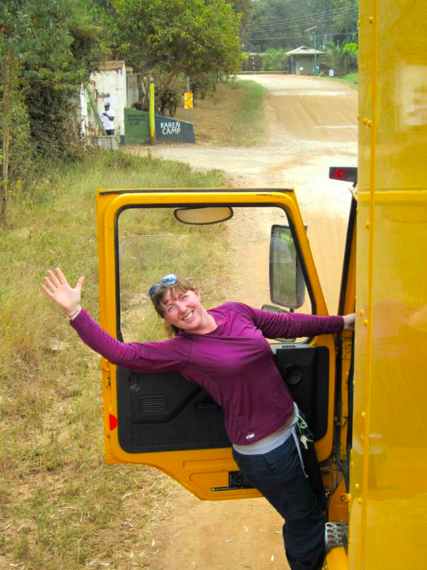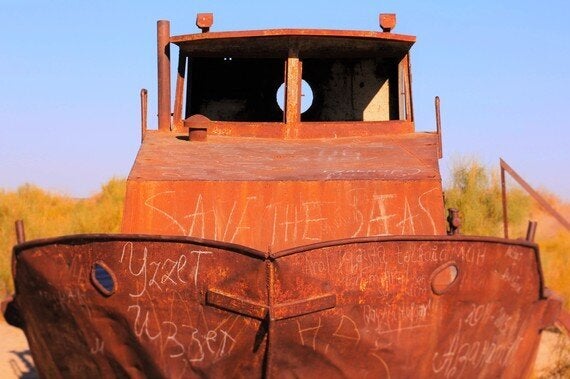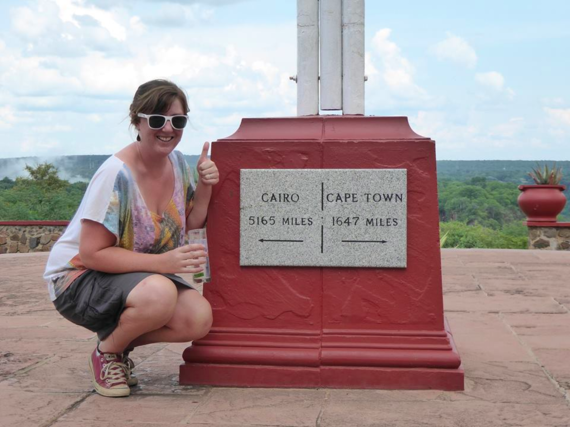It's safe to say, that being a tour leader sounds like the best job in the world.
I interviewed tour leader, Kim Owen, whilst in Colombia, on her tour around South America to find out what it's really like. It turns out that it is pretty great, but like any job, it is also far more nuanced than that.
Kim's Story

Kim has been professionally working as a tour leader for Oasis Overland for four years, after spending two years as a geologist, following university.
Having always wanted to travel, especially to see East Africa, Kim saved up and bit the bullet, going on an overlanding trip from Nairobi to Cape Town. By the end of the tour, she had 'fallen in love with the whole thing' and sent a job application off to Oasis' head office. She spent the next two years working in Africa, including going from Cairo to Cape Town, before being sent to loop around Central Asia, Iran and Turkey - where I first met her - and then to South America.
It all sounds rather glamorous. She says that it often doesn't feel like work as it's so sociable - she usually becomes good friends with her customers - and she has a permanent tan. She loves the self-sufficiency of being an overlanding tour leader, as it gives her the flexibility to improve the itinerary as the groups travels. I experienced this first-hand in Uzbekistan, when Kim worked out a way to take a rather long and last-minute detour to the shore of what was the Aral Sea, full of rusty, disused boats. It was very much a once-in-a-lifetime chance to see something of monumental environmental significance.

When everything is running smoothly and all the passengers are happy, she says it feels more like a lifetime of travelling with friends. But then, you go to countries like Venezuela or Iran and it's all substantially more stressful, as she is responsible for making sure the trip is as safe as possible in places where things can be far from 'safe'.
Kim was keen to stress that 'it's a harder job than it seems', tour leaders will work all day every day for months at a time. There is no leaving the office at 5pm and no weekends. You continuously have to 'try to meet your customers' needs' and what people expect can vary wildly. She found it hard to not have a personal life, it's expected that she won't be able to be there for friends' birthdays and weddings now, or even be able to go for a drink after work with them. It is also certainly not a career that will make you rich, but on the flip side, it means everyone who does that job, does it 'for the love of it.' She adores being able to show people places she's been and 'seeing their excitement' and 'experience it with them'.
What Does She Actually Do?

The tour leader role is 'pretty broad'. Before a trip starts, there is a lot of planning, as Kim will get in touch with all of the local contacts and make bookings with them months in advance. This also means the itinerary must be planned down to the day - a challenge on a 6-month trip across Africa, for example. There's a lot of budgeting and research involved too, to ensure the books are balanced and the group won't end up somewhere they shouldn't on a public holiday.
When on the trip, it's about the logistics of getting passengers across a continent unscathed and happy, always being one step ahead so she can answer their many, many questions and generally making sure everything runs smoothly and to plan. With security issues, she and the driver will make a decision on the ground, with information from local contacts in the area, and advised by head office. In Venezuela during some major protests, this meant changing the itinerary to avoid a certain area altogether and re-planning an entire section of the trip. Kim will also keep trip and driving notes, to pass onto the next tour leaders for the route; detailing exactly what time we left somewhere, how long it took to get to the destination and what we did along the way provides a reliable roadmap in incredibly remote areas of the world.
After the trip has finished, there is a fair amount of paper work and finalising the accounts, as well as often having to transit the truck to the starting point of the next trip or to a base where it can be stored. This can involve days more of driving. From Turkey to London or Quito to Cusco, for example.
I asked Kim what she thought was needed to make a good tour leader, these are the skills she came up with;
- Organisation
- Planning
- Timekeeping
- Patience (and a lot of it!)
- People Sills
- Money Handling/budgeting
- Flexibility
- Willingness to do whatever comes up
- Willingness to work anywhere and in any conditions
- Cooking skills!
- You sometime will also have to be a marriage councillor, psychologist...
Advice For Future Tour Leaders
Kim recommends that anyone interested in becoming a tour leader, especially for an overlanding company, goes on a trip first, preferably with the company you are interested in working for. It may seem an obvious point, but you need to be aware of the realities of what's involved. You will also initially need a small amount of money to support yourself through your first 3-month training trip after you've got the job. Whilst the company is likely to pay for the trip, you'll still need some cash to pay for the occasional meal and surprise extra as you won't get a salary yet.
Overall though, Kim has got to spend years travelling the world, has been paid to do it, and has loved every minute.
--
Emma Rosen taking a radical sabbatical and trying 25 careers before turning 25, and hopes to inspire readers to explore less well-known careers.
View her website and blog here: www.25before25.co.uk
I went to South American and Central Asia with Oasis Overland.